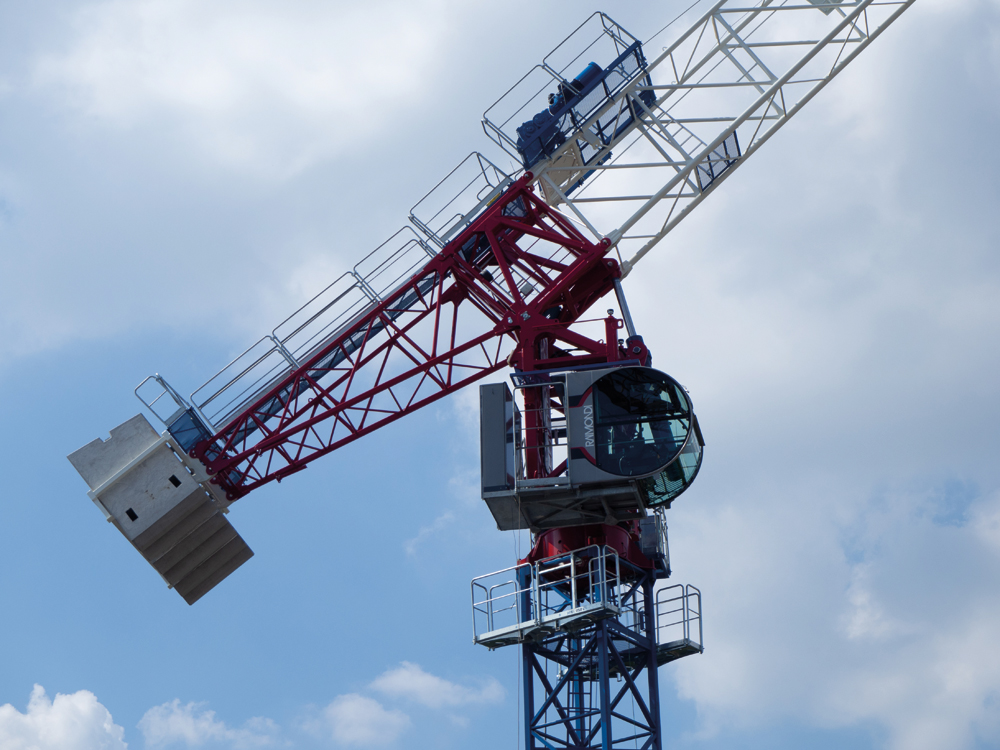Tower Crane Virtual Conference: Simplification
7 April 2021The focus of the presentation by commercial director at Raimondi Cranes Cristian Badin, was the simplification of the erection process through changes in crane design.
He initially talked about the evolution of the flat top tower cranes and the benefits this concept offers in terms of erection. The first advantage cited was the reduced size and number of parts compared to other types. “Less parts to be moved from the yard to the jobsite, means less trucks needed and therefore less costs.”
Another advantage is the possibility to assemble the complete jib of the flat top on the ground on site, provided there is enough space. “So with one single lift, the full jib can be assembled on top of the crane, with no need of connecting pendants to the cathead. This leads to a greater level of safety for the operators. In case the full jib cannot be assembled on the ground and the jib can only be erected piece by piece, the operators are still acting in a safe environment, as they can be inside the jib without having to connect the pendant,” said Badin.
When talking about luffing jib cranes, he said the only change in the crane concept has been the introduction of the hydraulic luffing jib crane. Even though the reasons behind the development of this type were not about erection, Badin said it has allowed modifications that facilitate the erection process. “For example, if we look at Raimondi's LRH174 hydraulic, the complete jib can be assembled on the ground. Thanks to the positioning of the hoist on top of the jib, we could potentially perform the complete cable reeving on the ground. Then with a single lift place the jib on top of the crane.”
“For what concerns conventional luffers we offered the possibility of using the luffing hoist for reeving the temporary cables that are needed to erect the jib on the right place during the erection process.”
He also mentioned how Raimondi has been clearly identifying the slinging points in the manuals and on the parts. Another improvement for the erection process according to Badin is the implementation of bolts connections instead of pins, as this is saving time. “In terms of the connection of mast, many manufacturers—including Raimondi—have presented tools and parts that made this process easier and safer. For example the access platforms, which can be installed on the towers during erection but also at the connection between the tower and the slewing part.”
He then talked about an upgrade Raimondi has been implementing to its products since the introduction of the MR60 hammerhead in 1988. This upgrade offered the possibility to have the counterjib, slewing and trolley as part of a unique assembly that the customer receives directly on the yard or site. “Using this concept we can perform the hoist cable reeving directly on the factory and deliver the part ready for the installation. The operation of reeving the cable is no longer performed after the assembly at height.”
Another way that the erection process has been improved is through commissioning. Badin said it used to take around half a day and it was performed at height by setting the limit switches of the trolley for close and long distance as well as the switches for setting the pre-slewing of the trolley. Nowadays because of the electronics, including PLC, the operation can be performed in less than an hour from the operator cabin.
Concluding Badin highlighted that manufacturers have to invest in standardisation as it could further improve erection and logistics.
